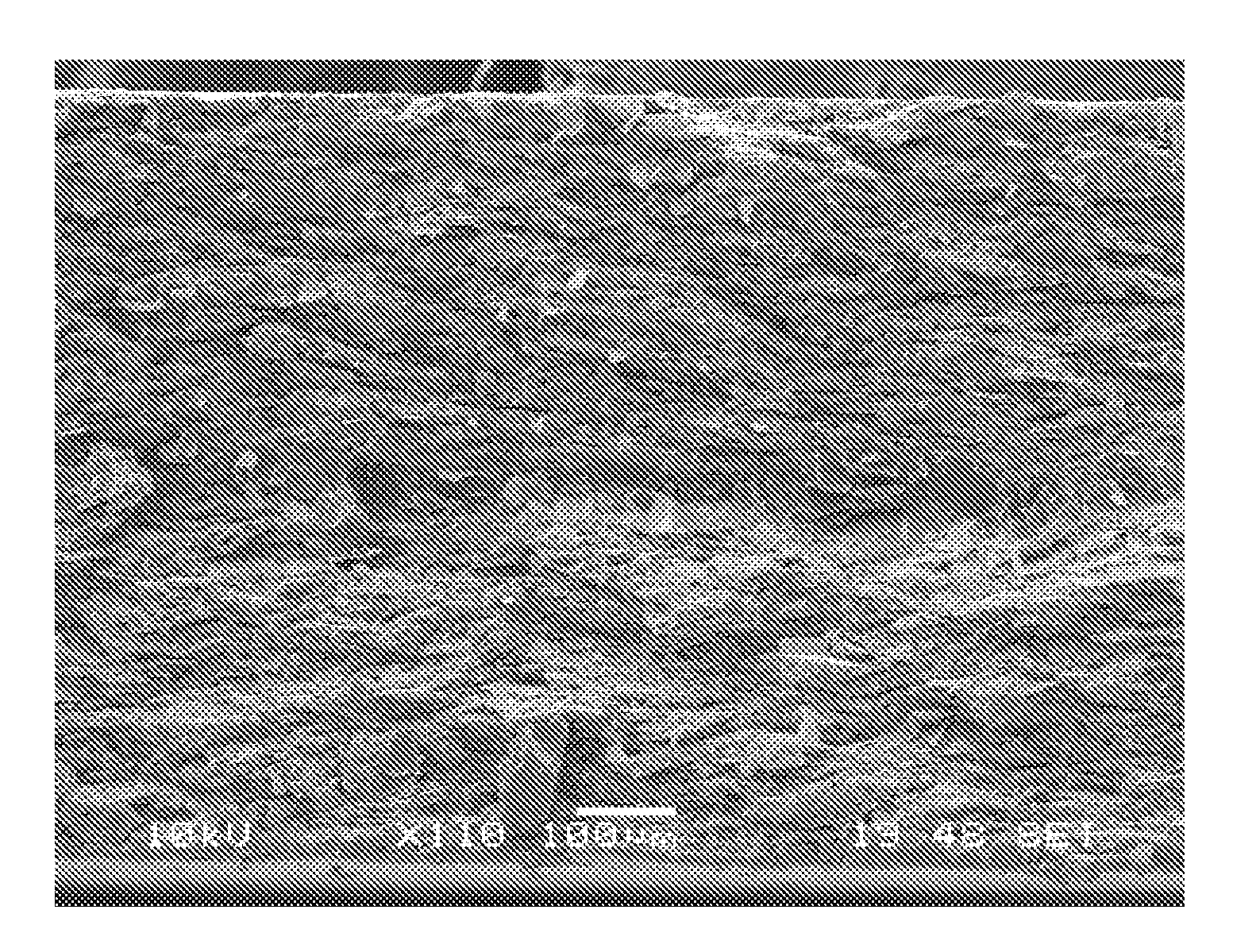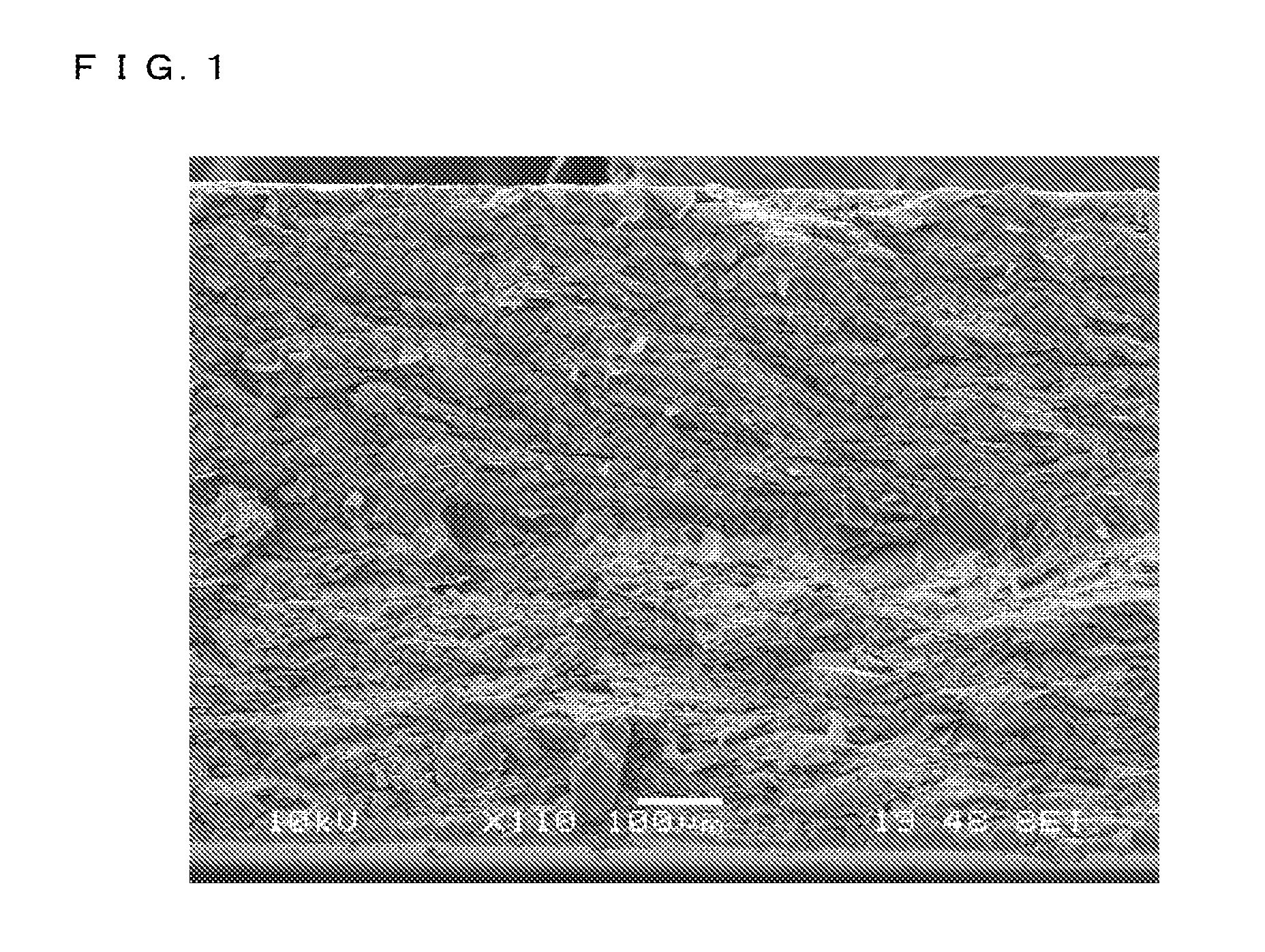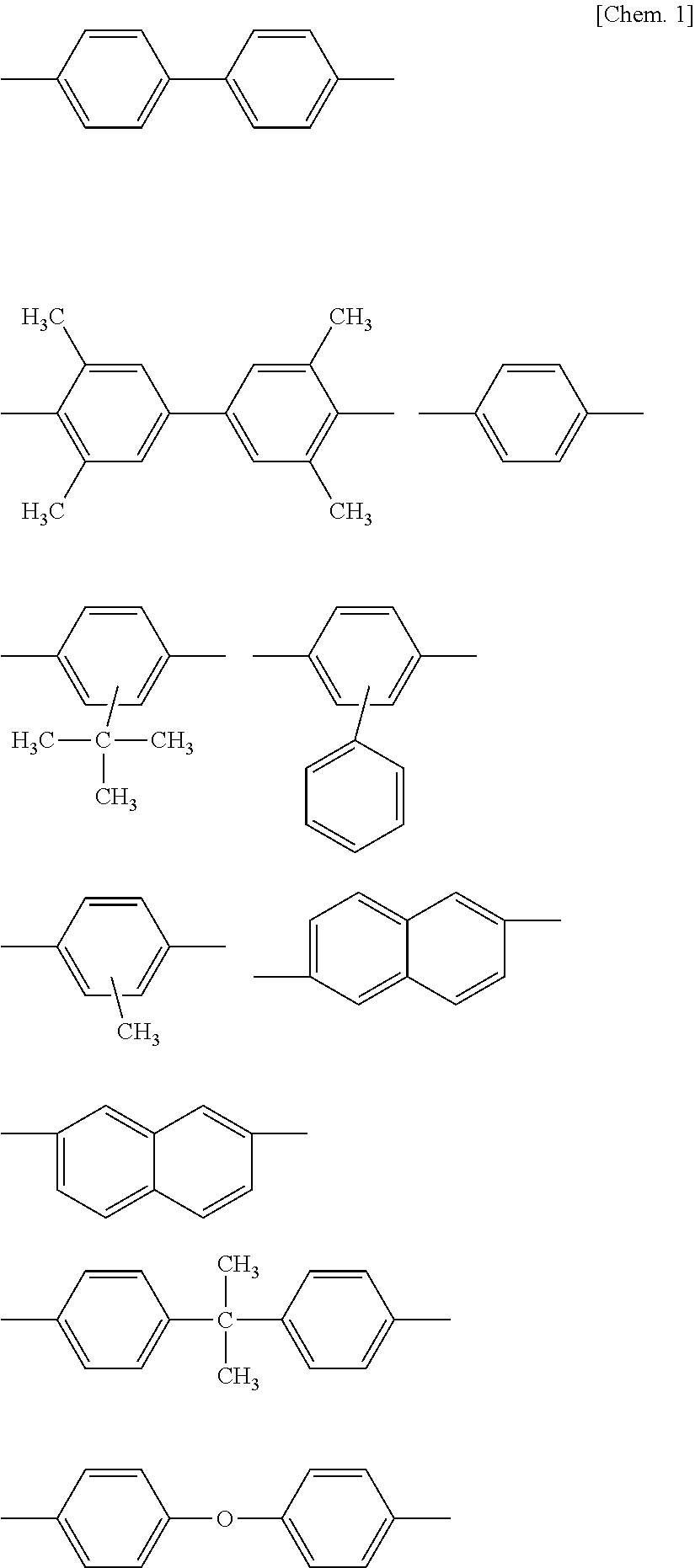Highly thermally conductive resin molded article
a technology of thermal conductivity and resin molded articles, which is applied in the direction of synthetic resin layered products, semiconductor/solid-state device details, chemistry apparatus and processes, etc., can solve the problems of difficult to distinguish resin molded articles from metals, difficult to release generated heat, and limited use of resin molded articles, etc., to achieve high thermal conductivity, low density, efficient and easy dispersibility
- Summary
- Abstract
- Description
- Claims
- Application Information
AI Technical Summary
Benefits of technology
Problems solved by technology
Method used
Image
Examples
production example 1
[0083]53 parts by weight of orthoboric acid, 43 parts by weight of melamine, and 4 parts by weight of lithium nitrate were mixed in Henschel Mixer. Thereafter, 200 parts by weight of pure water was added to the mixture. The mixture was stirred at 80° C. for 8 hours and then filtrated to obtain a filtrate, which was then dried at 150° C. for 1 hour. The resulting compound was heated in an atmosphere of nitrogen at 900° C. for 1 hour. Further, the compound was sintered for crystallization in an atmosphere of nitrogen at 1800° C. The resulting sintered matter was grinded, thereby to obtain plate-like hexagonal boron nitride powder (BN-1). The resulting powder had a number average particle size of 48 μm, a ratio of agglomerated particles to the resulting powder (an agglomerated particle ratio) of 6.1%, and a tap density of 0.77 g / cm3. When being caked alone, this powder had a thermal conductivity of 300 W / mK and was electrically insulative.
production example 2
[0084]50 parts by weight of orthoboric acid, 40 parts by weight of melamine, and 10 parts by weight of calcium carbonate were mixed in Henschel Mixer. Thereafter, 200 parts by weight of pure water was added to the mixture. The mixture was stirred at 80° C. for 8 hours and then filtrated to obtain a filtrate, which was then dried at 150° C. for 1 hour. The resulting compound was heated in an atmosphere of nitrogen at 900° C. for 1 hour. Further, the compound was sintered for crystallization in an atmosphere of nitrogen at 2000° C. The resulting sintered matter was grinded, washed by use of a nitric acid aqueous solution so that the calcium carbonate component was removed, and then dried at 150° C., thereby to obtain plate-like hexagonal boron nitride powder (BN-2). The resulting powder had a number average particle size of 19 μm, a ratio of agglomerated particles to the resulting powder of 7.5%, and a tap density of 0.88 g / cm3. When being caked alone, this powder had a thermal conduc...
production example 3
[0085]900 g of a polyether compound (I) (a bisphenol A ethylene oxide addition polymer which has an average molecular weight of 1000) and 10 g of a phenolic stabilizer AO-60 (produced by ADEKA Corporation) were placed in a pressure-resistant vessel (volume: 7 liters, produced by Taiatsu Techno Corporation) provided with a distillation tube and a stirrer, and the temperature was raised to 200° C. with stirring in nitrogen gas stream. Thereafter, 2100 g of polyethylene terephthalate resin (BELLPET EFG-70, produced by Bell Polyester Products, Inc.) was added at once. Then, the temperature was raised to 285° C. with stirring so that the mixture is melt and mixed. After the temperature reached 285° C., pressure inside the vessel was reduced to a pressure of not more than 1 torr. After that, stirring was carried out under the reduced pressure for 3 hours. Thereafter, the reaction was finished, thereby obtaining a block copolymer (CB-1) which (i) was composed of a polyethylene terephthalat...
PUM
| Property | Measurement | Unit |
|---|---|---|
| thickness | aaaaa | aaaaa |
| thermal diffusivity | aaaaa | aaaaa |
| volume resistivity | aaaaa | aaaaa |
Abstract
Description
Claims
Application Information
 Login to View More
Login to View More - R&D
- Intellectual Property
- Life Sciences
- Materials
- Tech Scout
- Unparalleled Data Quality
- Higher Quality Content
- 60% Fewer Hallucinations
Browse by: Latest US Patents, China's latest patents, Technical Efficacy Thesaurus, Application Domain, Technology Topic, Popular Technical Reports.
© 2025 PatSnap. All rights reserved.Legal|Privacy policy|Modern Slavery Act Transparency Statement|Sitemap|About US| Contact US: help@patsnap.com



